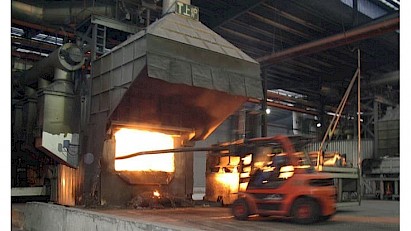Scrap policy reset in China part of 2021 metals pricing landscape
 The People’s Republic of China churns out more steel, aluminum and copper than any other nation on Earth, so if it’s scrap consumption percentage rises in 2021, the ripple effects are likely to be noticed.
The People’s Republic of China churns out more steel, aluminum and copper than any other nation on Earth, so if it’s scrap consumption percentage rises in 2021, the ripple effects are likely to be noticed.
A late February online presentation by Ian Roper and Joyce Li of Shanghai Metals Market (SMM) touched on scrap use in several of China’s base metals markets, along with other trends affecting the nation’s output and use of steel, stainless steel, aluminum and copper.
For the past two years, China’s government was known for the barriers it was putting in place to imported scrap, with the clock ticking on a proposed outright ban for seemingly all types of metal and nonmetallic scrap on Jan. 1 of this year.
The government ultimately decided against the self-imposed blockade. Instead, the nation set up a system that resulted in the return of considerable amounts of copper and aluminum scrap in the final two months of 2020, and the delivery of the first few shipments of ferrous scrap under a new “resource” classification.
Li remarked that China is far from self-sufficient in copper, with its “self-sufficiency rate” having dropped from 40 percent in 2010 to 22 percent in 2019. The restrictions on imported scrap in 2019 and 2020 thus led to increased copper cathode and aluminum ingot imports into China by mid-2020.
Although scrap import volumes rebounded in November and December, Roper noted red metal scrap imports into China dropped by about 300,000 metric tons in 2020. He said SMM expects a rebound in scrap imports in 2021, though it could be at the types of high prices that caused metals theft to become a hot button issue in North America and Europe, as in 2012.
In the ferrous market, Chinese steel producers seem to be gravitating toward electric arc furnaces (EAFs) and other technology designed to lower emissions and to consume more scrap. Even if Chinese producers import about 1 million metric tons of scrap in 2021, Roper said that is an amount that will make an impact in a region where mills in nations like Vietnam are bidding for the same scrap. With any additional tons purchased. The main effect, he said, could be “to lift global and regional steel scrap prices.”
Roper also said stainless steel, not electric vehicle (EV) batteries, was the biggest driver of nickel consumption in China in 2020. He said stainless produces in 2021 likely will be supplied by growing volumes of Indonesian nickel-pig iron and thus will have a limited appetite for scrap.
On the EV front, Roper said lithium-iron-phosphate (LFP) batteries are beginning to gain market share in passenger vehicles in China compared with ternary nickel, manganese and cobalt (NMC) battery packs. It is one reason, he said, SMM thinks nickel-pricing EV europhia “could be overdone at the moment.”
A question underlying all 2021 scrap purchase levels in China is the fate of that nation’s overall metals consumption strength in 2021. While China’s government spent money in 2020 to roar back from COVID-19, by August it was meeting with property developers to deliver a message about “three red lines” (debt-to-cash, debt-to-assets and debt-to-equity ratios deemed too high to cross).
Roper, who is based in Singapore for SMM, cited the “three red lines” policy on property loans as a potential barrier to steel consumption. Li, while considering copper’s consumption outlook in 2021, said China may have ended its “golden decade” of rampant apartment construction.
In both sectors, infrastructure spending could provide an alternative pathway to more metals consumption. However, Roper said he does not see “big infrastructure spending” as likely in China in 2021, though one “pocket of [metals] consumption” will involve urban subway and metro system buildouts.
You can return to the main Market News page, or press the Back button on your browser.

